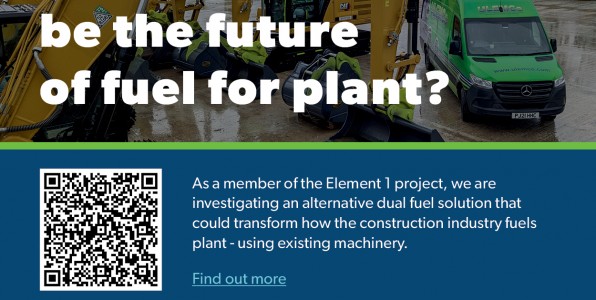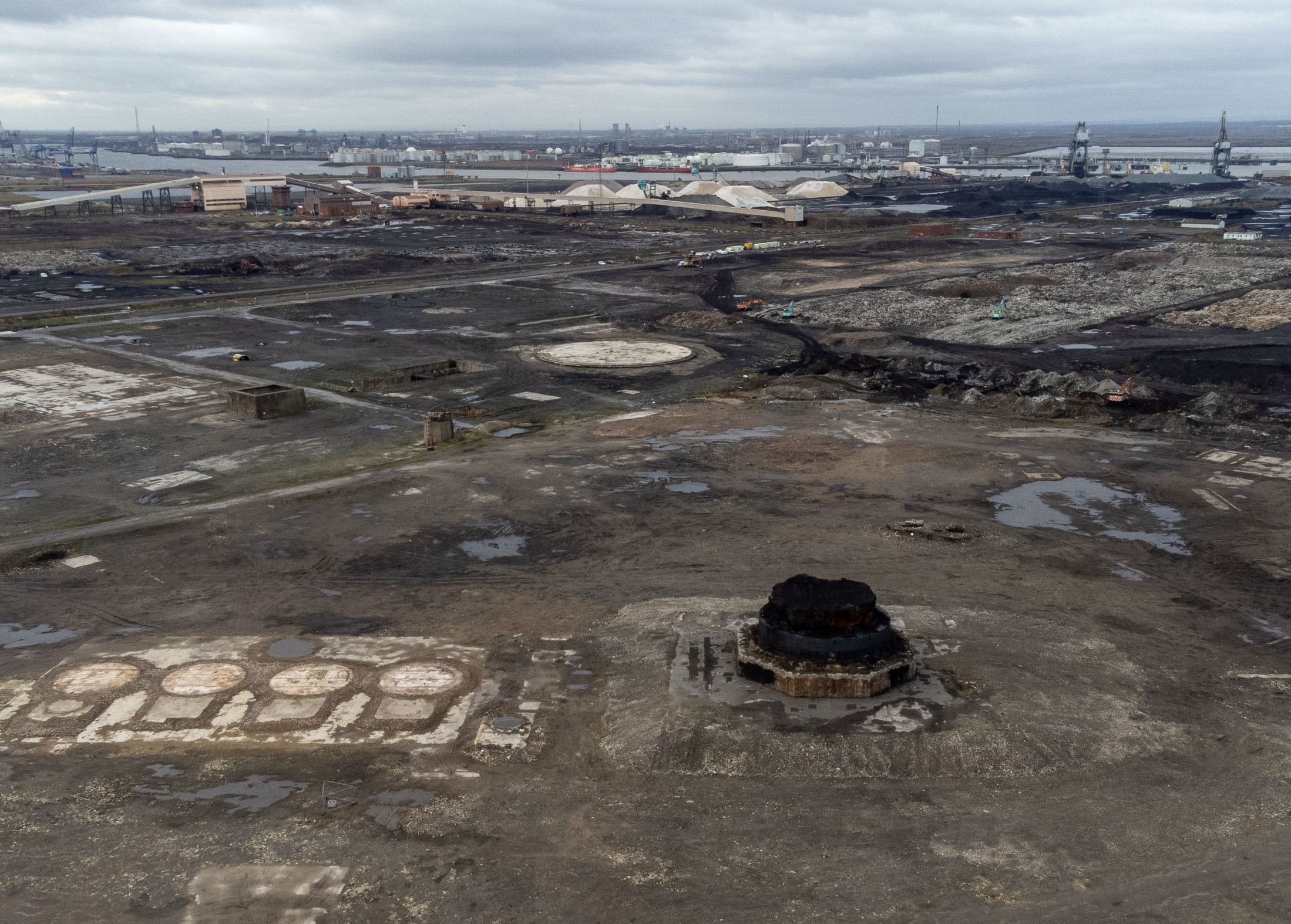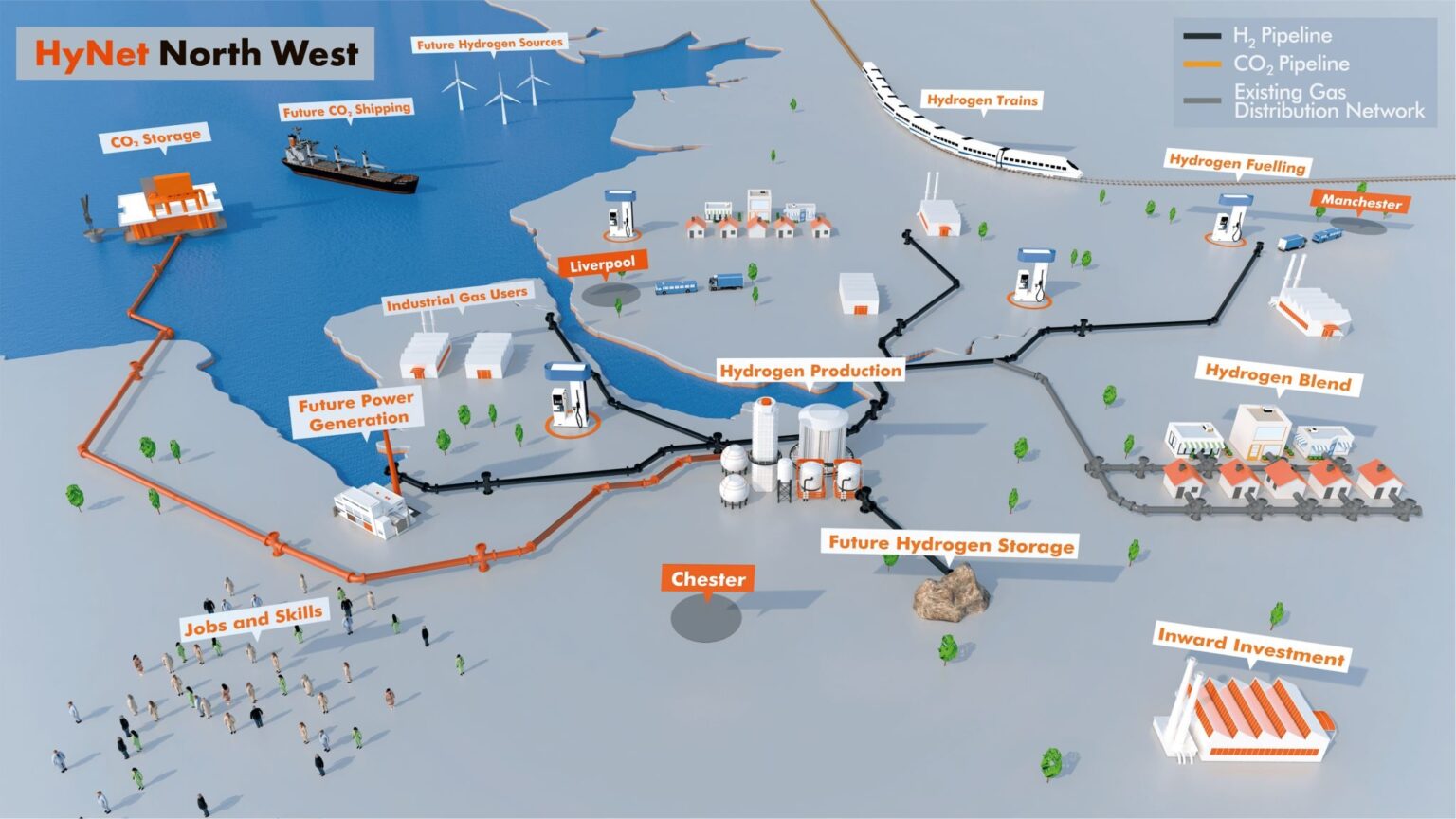Work to start on Teesside and Merseyside carbon capture schemes

Work to start on Teesside and Merseyside carbon capture schemes
The government has pledged nearly £22bn for projects to capture and store carbon emissions from energy, industry and boost hydrogen production over 25 years.
The funding commitment will kick-start two carbon capture cluster schemes on Merseyside and Teesside, promising to create thousands on construction jobs in the North
The highly anticipated £4bn Net Zero Teesside project – led by bp and Equinor – promises to sustain 3,000 construction in the region.
Today’s confirmation of Government support for the big carbon capture, utilisation, and storage (CCUS) facility at Teesworks will allow work to start by the end of this year to allow operations to begin in 2027.
The proposed power station will generate up to 860MW of low carbon electricity while up to two million tonnes of CO2 emissions from it will be captured each year.
This captured CO2 will then be transported by the Northern Endurance Partnership (NEP) by pipeline to a geological storage site under the North Sea, where it will be permanently and safely stored.
Tees Valley Mayor Ben Houchen said the go-ahead was a monumental day for Teesside.
“The NZT project will provide power to 1.3million homes, help with energy security, but more importantly it will give generational job opportunities to local people as Teesworks becomes the new ICI – providing investment, training and well-paid jobs for local people.”
Teesside scheme projects
A CO2 gathering network of pipeline connections from industrial facilities on Teesside to transport the captured CO2
An 850MW combined cycle gas turbine electricity generating station, cooling water, gas and electricity grid connections and CO2 capture;
A CO2 gathering/booster station to receive the captured CO2 from the gathering network and CCGT generating station
An onshore section of a CO2 transport pipeline for the onward transport of the captured CO2 to a suitable offshore geological storage site in the North Sea.
Contractor delivery team
- Onshore power, capture and compression – Technip Energies and GE Vernova consortium, including Balfour Beatty as the construction partner and Shell as the technology licensor
- Onshore CO2 gathering system and gas connection – Costain
- Linepipe – onshore and offshore – Marubeni-Itochu Tubulars Europe with Liberty Steel Hartlepool, Corinth Pipeworks and Eisenbau Kramer as the nominated pipe-mills
- Offshore pipeline, landfalls, onshore outlet facilities and water outfall – Saipem
- Offshore subsea injection system – Technip FMC
- Power and communications cable – Alcatel Submarine Networks
- Offshore systems engineering – Genesis
- Integrated project management team – Wood
In Merseyside, the HyNet North West project includes businesses like Eni, Essar, Cadent, Ineos Inovyn and Uniper.
Delivering HyNet will secure £5bn of private sector capital to enable re-industrialisation of the region.
Development consent was granted for the CCUS cluster back in March.
A key part of the network will be constructing separate hydrogen and carbon dioxide pipelines in the region.
The mega project will also feature carbon capture on Heidelberg Cement’s Padeswood works in Mould, a new hydrogen production facility and energy-from-waste plants, sustaining an estimated 6,000 construction jobs.
The hydrogen pipeline network, being developed by Cadent, involves Wood E&I and WSP.
Eni is developing the carbon dioxide transportation and storage system that will serve the Hy Net transporting CO₂ to depleted gas reservoirs under Liverpool Bay.
Around 24km of the pipeline is repurposed from a former natural gas pipeline, while the remaining 36km will be newly constructed. The largest new section is between Stanlow and Flint, which is 32km long
There will be several spurs into the pipeline from big industrial users.
The spur for the Padeswood cement factory will be 8km long. Construction is expected to begin this year and to be completed by 2027.









Comments are closed